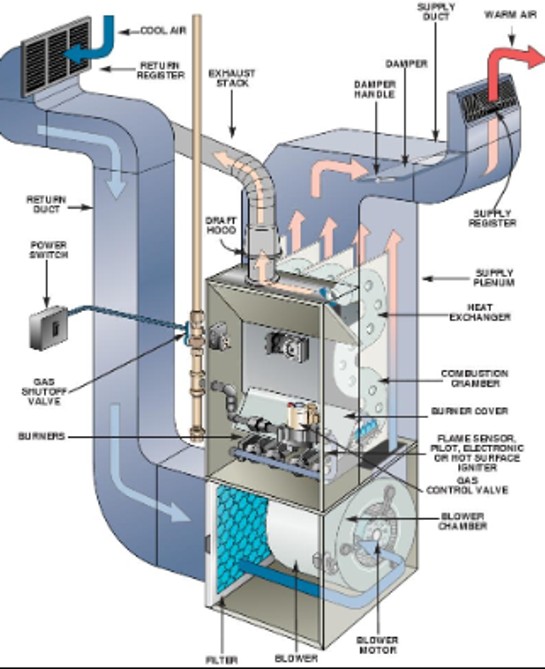Home Improvement
7 Common Furnace Repair Components

If your home’s furnace isn’t functioning optimally, it may be time for a repair service. Furnace repair professionals inspect components like your furnace’s heat exchanger, thermostat, and ignition system. Repairing these furnace elements keeps your heating system running efficiently and safely. Here is more information about furnace components that HVAC professionals from London furnace repair may have to repair:
1. Thermostat
The thermostat is the command center of your heating system. It detects the temperature within your home and sends signals to the furnace to start or stop heating. If your furnace isn’t responding correctly to the temperature changes, this could indicate an issue with the thermostat. A thermostat repair service may include recalibration, battery replacement, or a complete thermostat replacement.
2. Filters
Furnace filters play a key role in maintaining the air quality in your home. They trap dust, allergens, and other particles, preventing them from circulating through your home. Over time, furnace filters can become clogged and reduce the efficiency of your heating system. Regularly replacing or cleaning your air filters helps improve airflow and keeps your furnace working properly.
3. Blower Motor
The furnace’s blower motor powers the fan that circulates warm air throughout your home. If the blower motor malfunctions, your furnace may not distribute heat evenly or may not work at all. Symptoms of a faulty blower motor include unusual noises, constant cycling, and insufficient heat. A professional furnace repair technician can diagnose this issue and replace the blower motor if necessary.
4. Heat Exchanger
The heat exchanger is where the cold air gets heated. Heat exchangers can crack or break due to wear and tear. A damaged heat exchanger leads to inefficient heating and poses a risk of carbon monoxide leakage. If you notice cold air coming from your vents when the heat is on, this may be a sign of a damaged heat exchanger. Contact a professional furnace repair service immediately to restore heat and protect your home from carbon monoxide.
5. Ignition System
Some modern furnaces use electronic ignition systems, which can be more efficient and reliable than traditional pilot lights. Electric ignition systems may fail due to electrical issues or component failures. If your furnace isn’t igniting, hire an HVAC professional to inspect the ignition system. The repair process may involve cleaning, recalibrating, or replacing the ignition system for proper functioning.
6. Flame Sensor
The flame sensor is a safety device that detects whether the furnace’s burner is lit. If it doesn’t detect a flame, it shuts down the system to prevent unburned gas from filling your home. A dirty or faulty flame sensor can cause your furnace to shut off unexpectedly. HVAC technicians may clean your furnace’s flame sensor with steel wool or replace it if it is damaged. Regular maintenance of the flame sensor promotes safe and efficient furnace operation.
7. Gas Valve
The gas valve is responsible for regulating the gas supply to the burner. If this component is not working correctly, it can cause complications with the ignition process or result in inconsistent heating. If you suspect a gas valve issue, seek expert help immediately to minimize the risk of a gas leak. A furnace technician can determine whether the valve is loose or broken and provide appropriate repair services.
Hire an Expert Furnace Repair Technician
Understanding the main components of your furnace and recognizing signs of malfunction helps you identify and address potential issues early on. Scheduling regular maintenance with a professional HVAC technician keeps your furnace operating well and prevents minor problems from escalating to major repairs. Contact a trained and experienced furnace technician today to learn more about their maintenance and repair services.










